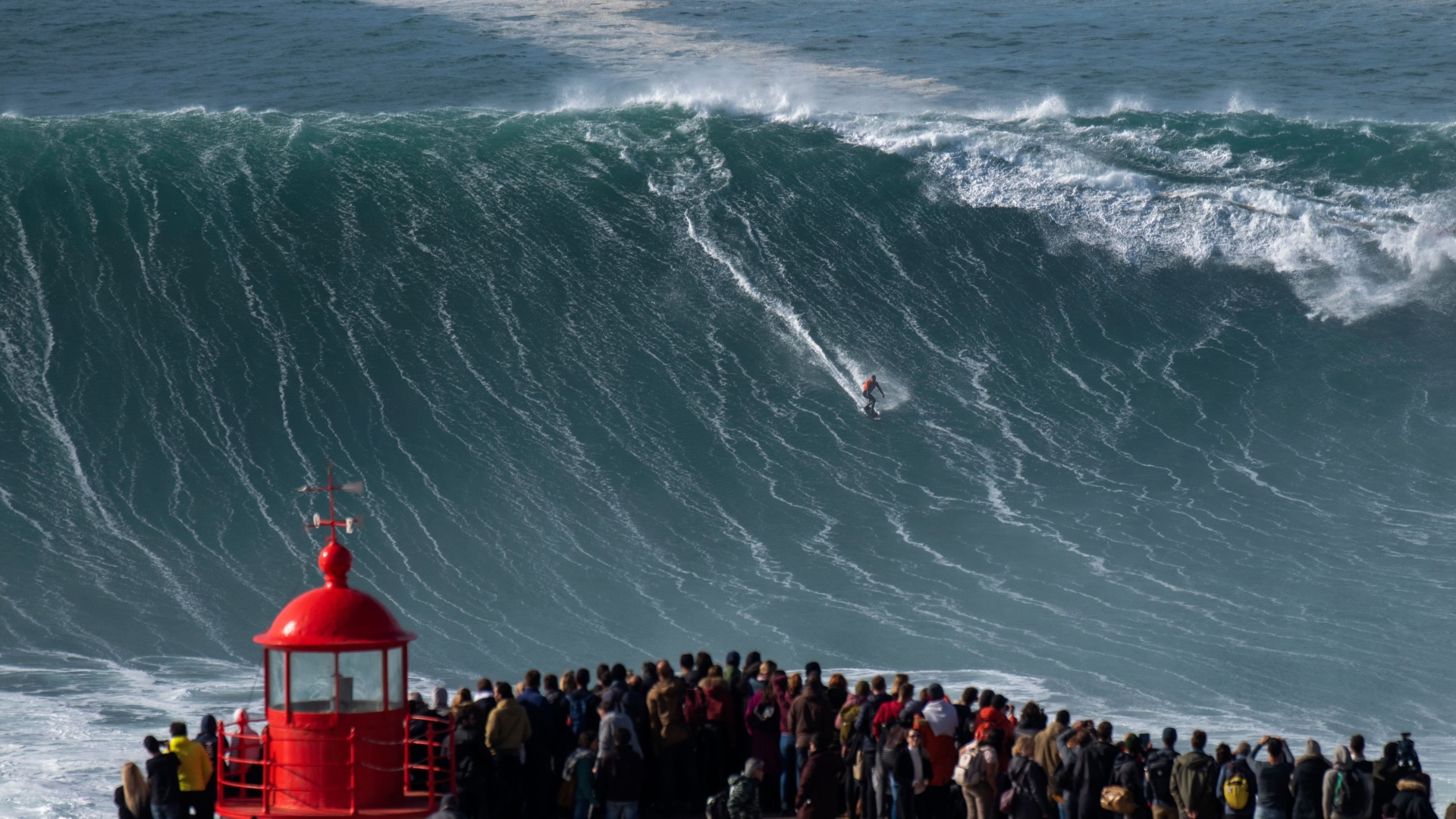In Portugal for work, I borrow a car from a friend and drive north to Nazaré, home of the biggest surf in the world. I am not a surfer – don’t own a board, never done it – and I don’t follow surfing as a sport either. But I’ve been gripped by the social media footage of micro-humans on tiny boards ripping like razor blades down the front of terrifying Atlantic waves.
For a few years I’ve watched these films in awe, assuming Nazaré is somewhere out there on the most westerly tip of the European landmass, difficult to access unless you live in adventure nylon and drive touring vehicles covered in surf stickers. But I’m wrong – it’s 90 minutes north of Lisbon. It feels incredibly exciting to be heading there.
As I edge slowly down into Nazaré, wondering whether to go straight to the famed lighthouse to see the big surf or head to the highly recommended Aki-d’el-Mar Marisqueira for some seafood, all I can see ahead of me is a band of golden sand and a head of frothing, rolling waves.
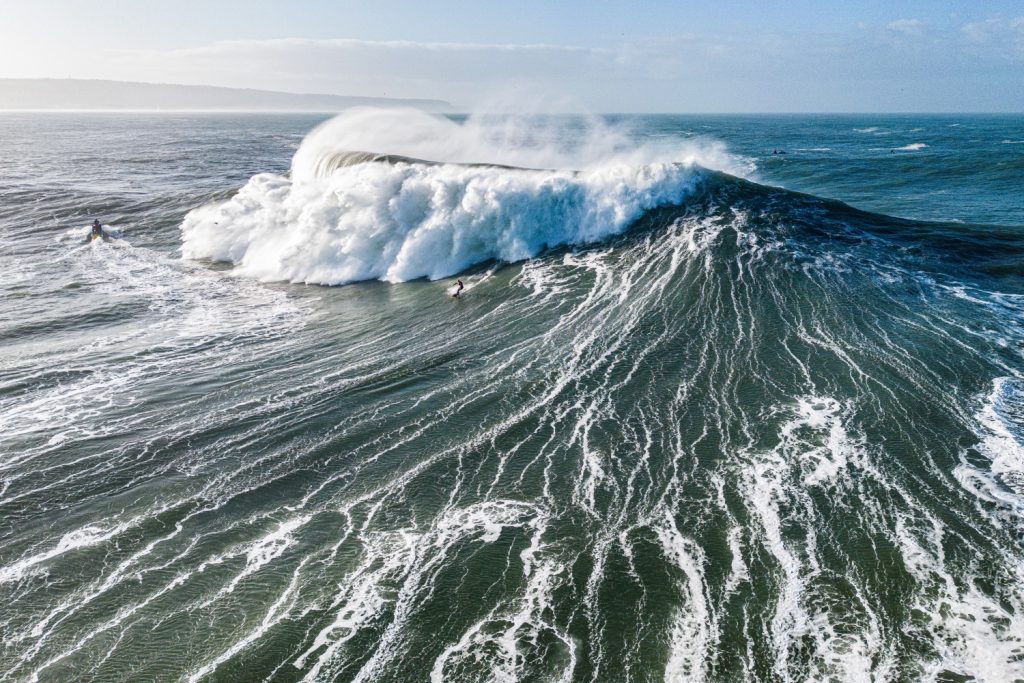
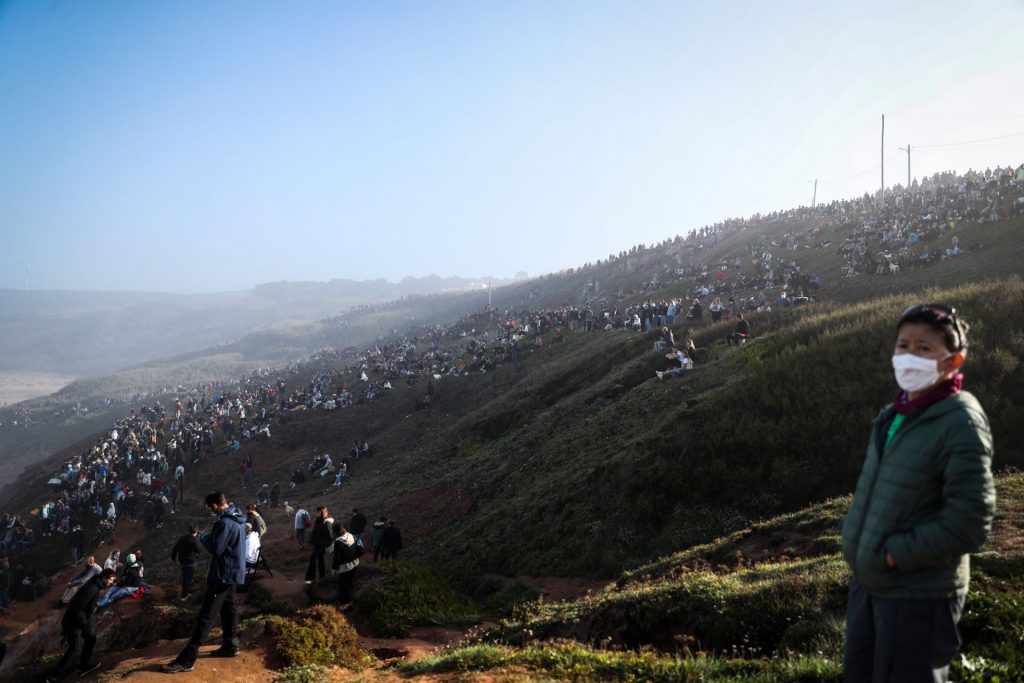
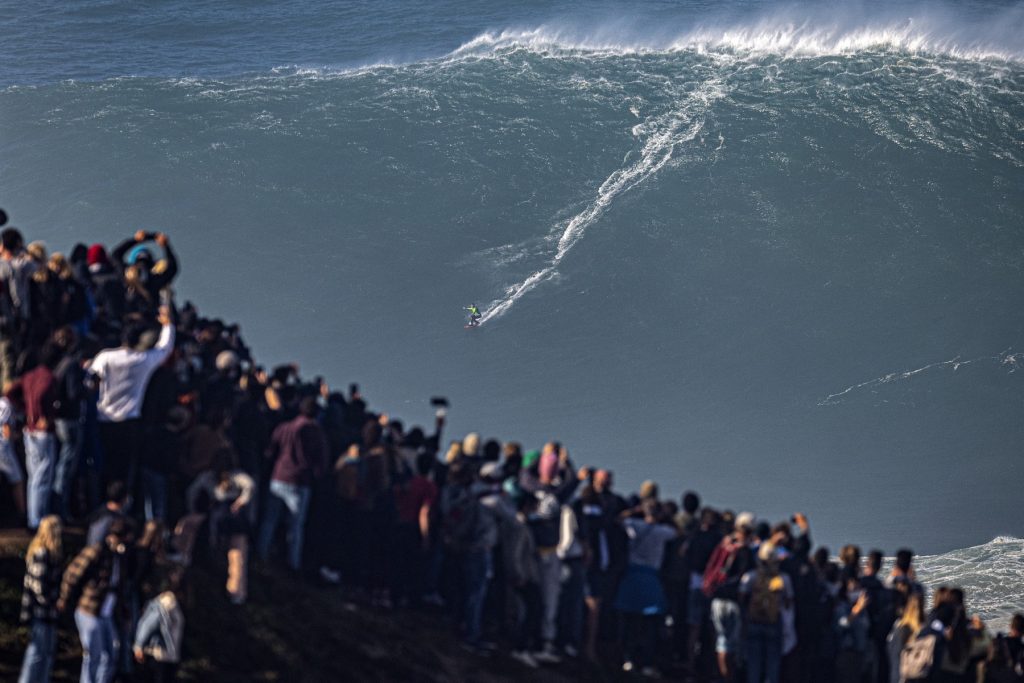
Even on this, the sheltered south shore with its hotels and restaurants and vast swathe of holiday sands, there’s a good 20 feet of no-man’s-land between the beach walkers and the shoreline. That’s because every few minutes a wave breaks and surprisingly sweeps further up and across the shoreline, much faster than any of its predecessors. Fishing boats lift and dip in the swell. This is the calm side.
Looking out to the headland, you see two things: the Atlantic Ocean exploding against rocks and rearing up into stalling clouds; and beyond that, a fast-moving black shadow that races from left to right across the horizon before disappearing into the Praia do Norte. It moves with the speed and scale of the shark attacks in Jaws. Huge and ominous.
It’s one of the super waves. These form because of the unique 16,000ft-deep geological canyon that stretches 140 miles out to sea. The trench is three times deeper than the Grand Canyon, and roughly the distance from Liverpool to Cambridge. This creates the colossal swell that draws the world’s greatest big wave surfers, the crowds of spectators, and the documentary crews.
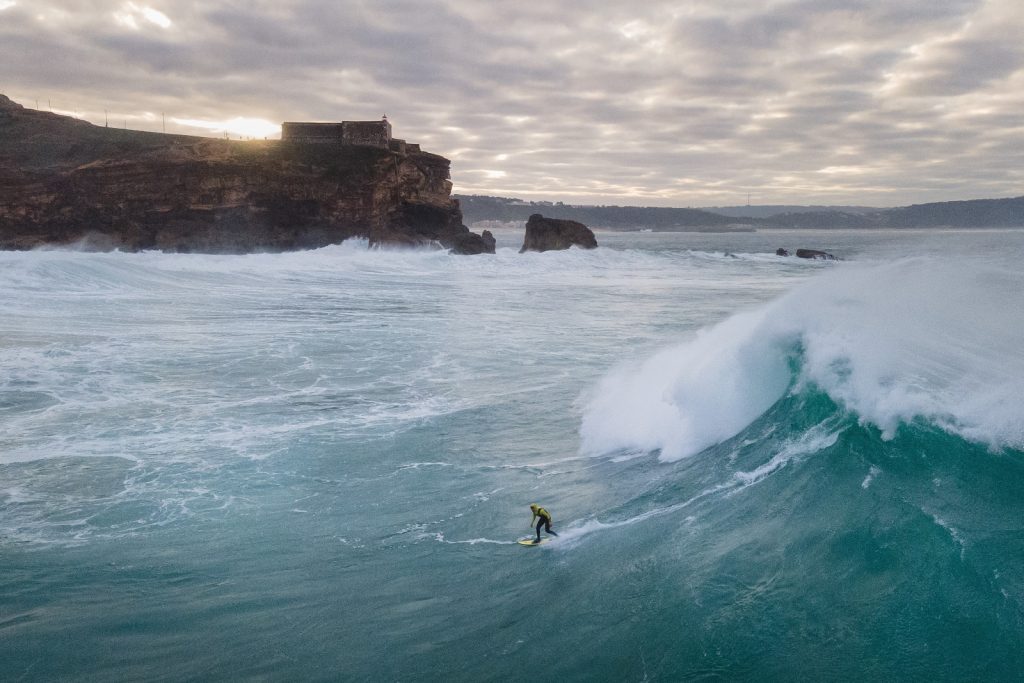
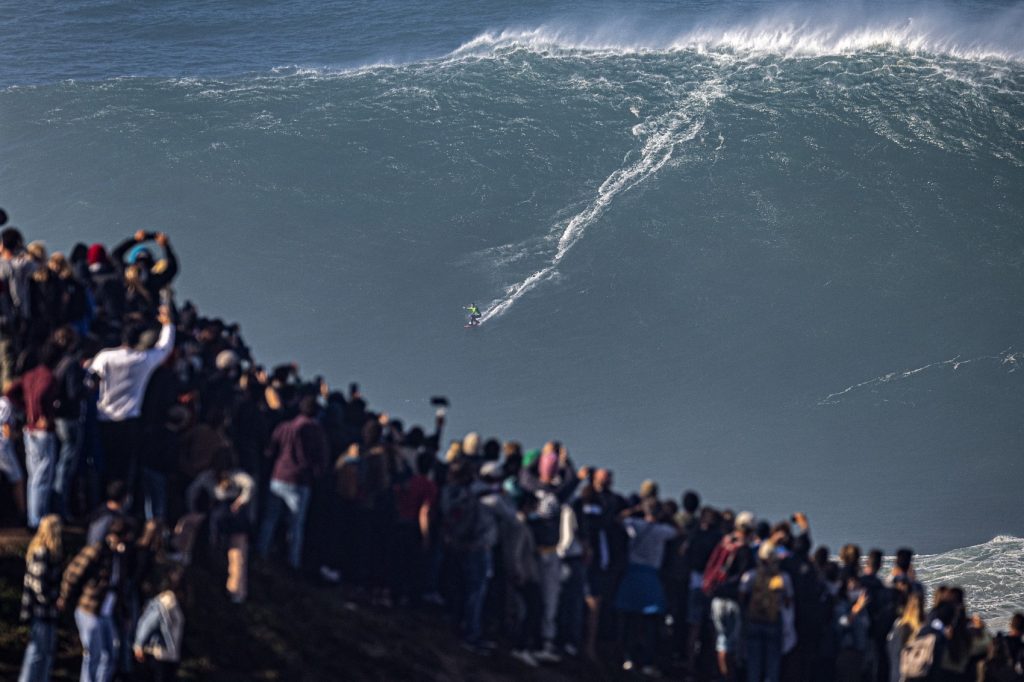
Whereas the other big wave spots around the world, like Hawaii and Western Australia in particular, have safe channels where others can bob in the water and watch the action, Nazaré has nothing but rocks and violent surf. It’s a battleground of giant white waves. The Irish surf legend Al Mennie has described being in the thick of it as “like being hunted”.
You park in the old town and wander down a cliff road past buskers and wagons selling surf merch. There’s a giant wooden pagan man/stag statue holding a board looking out to sea and if you follow its gaze your eyes land on an erupting field of surf. Long, dynamic waves roar in and smash together and there appears to be no rest from the constant rising and turning of the waters. Even though the waves are “smallish” today there are two surfers out there surfing the biggest waves I’ve ever witnessed, running a fifth of the size of the big beasts that will come over the winter months. But still, they are large enough for the surfers to disappear into the barrel and then be catapulted high into the sky at the far end of a successful run.
People have been riding the monster waves for just over a decade now since American surfer Garrett McNamara and his wife, Nicole, answered a local photographer’s request to come and see if the giant seas were surfable. Realising he’d need two fearless jet-ski riders to help him crack the giant waves, one to tow him in and the other to rescue him, McNamara recruited two young wildcat surfers from the big seas off the north-west coast of Ireland, Al Mennie and Andrew “Cotty” Cotton, a part-time plumber from Devon. On November 1, 2011 the three of them combined to help McNamara set a world record when he surfed a 73ft wave off Nazaré.
The appeal is the uncontrollable violent beauty of the seas and the commitment of the men and women daring enough to risk their lives to surf them. For all the media attention the scene attracts, it’s that danger that makes their feats even more impressive.
In January this year, the Brazilian surfer Marcio Freire died of a heart attack on a wave in Nazaré. And yet, strangely, the view from the lighthouse of such stunning natural beauty is life-affirming for those who visit. McNamara and Cotty are in Nazaré now, waiting for the next really big one.

